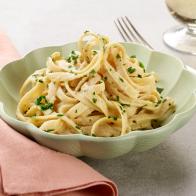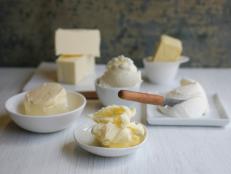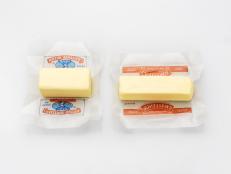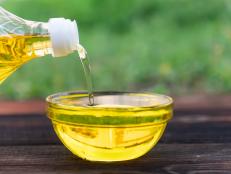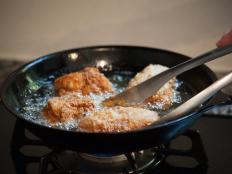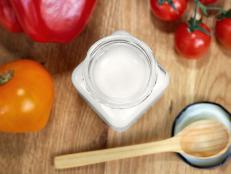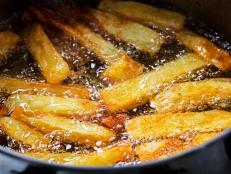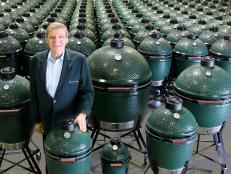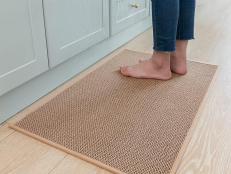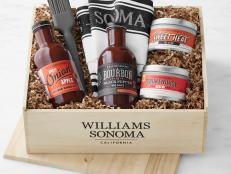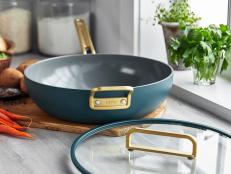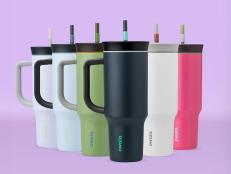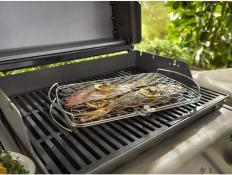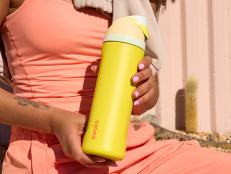Margarine vs Butter: What’s the Difference?
And can you substitute one for the other?

LarisaBozhikova/Getty Images
By Layla Khoury-Hanold for Food Network Kitchen
Layla Khoury-Hanold is a contributor at Food Network.
When it comes to butter and margarine, there are more options than ever lining the dairy aisle at your grocery store. But what's the difference? And can you substitute margarine for butter? Here’s everything you need to know about margarine vs butter.
What Is Margarine?
Margarine is made from vegetable or animal fats, or a combination of both, blended with oil or sometimes milk. Margarine may also contain additional flavors, colorings, preservatives, emulsifiers or vitamins.
According to the U.S. Food and Drug Administration (FDA), margarine must contain at least 80 percent milkfat. Anything containing less than that is considered a “spread.” Margarine that is packaged and sold in tubs is softer and more spreadable than solid products and contains a higher percentage of air and water. Lower-fat spreads contain more water.

gemredding/Getty Images
What Is Butter?
Butter is a churned substance made from dairy cream or milk.
In the U.S., cow’s milk butter is most common, but other versions exist, such as butter made form the milk of buffalo, sheep, goat or yak. According to the U.S. Department of Agriculture (USDA), butter must contain at least 80 percent milkfat, not more than 16 percent water and 2 to 4 percent milk solids. Butter can contain added salt; in which case it has up to 2.5 percent added salt. European-style butter has more milkfat than regular butter (typically from 82 to 86 percent) and little to no added salt.

Lizuca Hila / 500px/Getty Images
Margarine vs Butter
There are several differences between margarine and butter, starting with their ingredients, which impacts flavor, texture, color, melting point and how each is sold.
Here are the differences between margarine and butter:
Ingredients: butter is made from dairy milk or cream, while margarine is made from plant and/or animal fats.
Flavor: butter has a richer flavor than margarine.
Texture: butter has a richer mouthfeel than margarine, whereas margarine can be greasier.
Color: butter is typically light yellow in color, but can also range from white to deep yellow, depending on the animal’s diet. Margarine is often dyed yellow to make it look more like butter, otherwise it is white.
Melting point: butter melts at approximately 93 degrees F and burns easily, whereas margarine melts at a slightly higher temperature, making it a good choice for baking things such as puff pastry.
Packaging: butter is typically sold in blocks or sticks, whereas margarine can be sold in sticks or in tubs.

oceane2508/Getty Images
Can You Substitute Margarine for Butter?
It depends. When it comes to flavor, you can’t substitute margarine for butter because butter has a richer flavor and mouthfeel that can’t be replicated by margarine. However, margarine can be a good substitute for butter in vegan and plant-based cooking and baking.
If you're baking, it’s best to use what the recipe calls for, but that doesn’t mean you can’t experiment. Some people prefer to bake with margarine because its higher water content yields softer baked goods. A good rule of thumb for baking: When baking recipes call for melted butter, you can swap in melted margarine (from sticks, not tubs). If you swap in softened margarine in a recipe calling for softened butter, you’ll get a different texture—cookies made with margarine are more likely to spread when they bake and pie crust made with margarine won’t be as tender and flaky as one made with butter. Don’t use the kind of margarine that comes in tubs (aka spreads) for baking, either. Those are lower in fat and contain more water and air, which can lead to tough baked goods.
Related Links:
